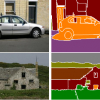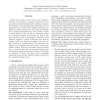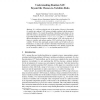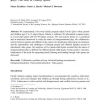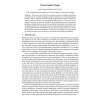432 search results - page 15 / 87 » The Interleaving Problem in Program Understanding |
CVPR
2010
IEEE
14 years 3 months ago
2010
IEEE
Recent advances in scene understanding and related tasks
have highlighted the importance of using regions to reason
about high-level scene structure. Typically, the regions are
...
IEEEARES
2009
IEEE
14 years 2 months ago
2009
IEEE
Botnets have become a severe threat to the cyberspace. However, existing studies are typically conducted in an ad hoc fashion, by demonstrating specific analysis on captured bot ...
CP
2004
Springer
14 years 24 days ago
2004
Springer
It is well known that the ratio of the number of clauses to the number of variables in a random k-SAT instance is highly correlated with the instance’s empirical hardness. We con...
CSCL
2010
13 years 2 months ago
2010
We implemented a five-week family program called Family Quest where parents and children ages 9 to 13 played Quest Atlantis, a multiuser 3D educational computer game, at a local af...
ESOP
2009
Springer
14 years 2 months ago
2009
Springer
We present a type theory for analyzing concurrent multiparty interactions as found in service-oriented computing. Our theory introduces a novel and flexible type structure, able t...
